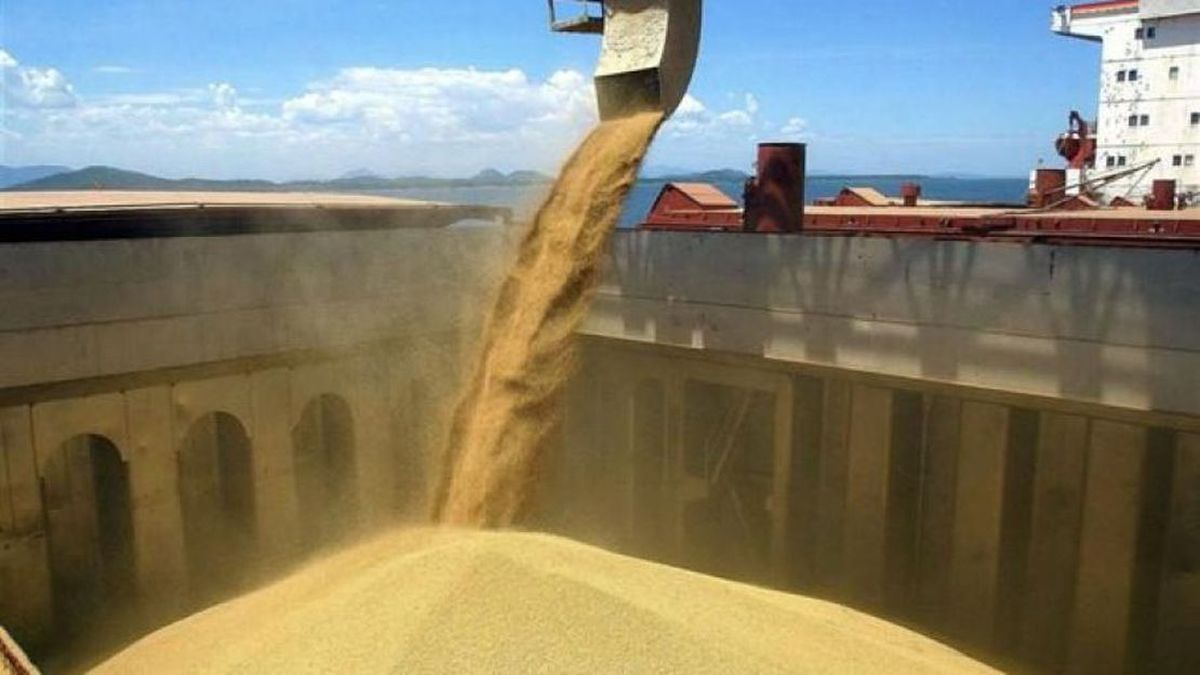The measure is an incentive for the perspectives of the sector, especially, when two risks are observed for the next harvest. One, the decrease in international prices of grains; The other, the climatic, the persistent scarcity of rainfall. Withholdings on agricultural exports are a long -discomfort in the Argentine economy, more when it is, par excellence, the foreign currency sector.
The dictation of this decree is an opportunity to express some comments on the influence that withholdings have in the Argentine economy, especially in a grain like soybeans.
These withholdings are one of the species of imposition to international trade and is constitutionally enunciated under the name “Import and Export Rights” in the current subsection 1 Article 75. However, already, in the original writing of 1853 (Article 64, subsection 1) This concept was included. The clause was a reason for modifications in 1860 and 1866.
The constituents assigned to the Nation the power to receive these taxes and in the scope of the federal co-participation system, they are non-co-participible income as arises from article 2 subsection A, Law 23,548 (BO 26-01-1988).
Soy is an oleaginous that, by production volume and that of its derivatives is one of the goods that provide large export volume and, consequently, of exportable balance.
The total export Argentina for the year 2022 was US $ 88,446 million and soybeans contributed $ 24,868 million (incidence of 28.11 %); Total imports, for that year, were US $ 80,841 million. These figures Dan have the importance that this has in foreign trade, for originating exports, exportable balance, and even finances to the deficit sectors of the commercial balance.
The collection importance of soybeans is reflected in the assigned retention aliquot. The tax numbers of the year 2022 are illustrative of the importance of these withholdings. The aliquot ranged between 30 % and 33 %, this last percentage was applied for that year, for this reason, according to export level 2022, the contribution of retention collection is estimated equivalent to US $ 7.5 billion.
The national collection for the year 2022, according to dollar calculations, reached the sum of 112,000 million. These data allow observing the interference of public income caused by this good, As for export rights, national, provincial and municipal taxes that reach soybean production and their derivatives must be added.
This economic magnitude is surely one of the government reasons to keep the aliquot that gravels soy exports and its derivatives. However, there are also tax operational reasons; It is a source of income that demands low cost. Indeed, The Treasury finds that the taxpayers contribute (exporters) are scarce, the comfort to receive it, the ease of control, and the scan availability of operational resources to collect.
The publication of this decree merits some considerations on different aspects of this collection item; reason why in this note the following are explained: a) the incidence on production and economy; b) The affectation on co -participation. Others to comment in future note would be the lack of state policy; the degradation of withholdings as an economic tool; The dilemma of state measures or policy?
The incidence of retentions in production and economy
The soy has come to have a 35 %aliquot, not to mention the frustrated attempt of resolution 125 in 2008 that exceeded that percentage (45 %). The incidence in production is because agricultural producers, Since 2002 onwards, they have developed their activity with a depleted income; The reduction, for this oleaginosa, ranged between 25 % and 33 %, according to times. (1)
The differences between Argentine producers and other countries in the world do not culminate with retentions, but, in other nations, they receive subsidies, something that Argentina, for some extraordinary circumstances, do not perceive it; Even in banking matters, in this country, there are conditions to access credit, which prevent free marketing.
This remove of income to agricultural activity causes the deceleration of the multiplier effect, because they are income that, in the hands of the State, do not have the same consequence and/or efficiency; Even, with the aggravating person, the affectation to the cities of the interior, by not granting the possibility of allocating that income in goods (construction) and services. In addition, that depletion of income means for the producer the impossibility of achieving, via greater rent, a more efficient company, for better machines and/or more and better supplies.
The economy loses multiplier effect because the efficiency of that income in the hands of the State (through taxes) is less than that of the private sector, with the paradox, that the effect of this minor in the multiplier effect causes in the state loss of collection.
Co -participation involvement
Export withholdings is the Faculty of the National State, ERGO, is not part of the co-participible concepts, Law 23548 (BO 2-01-1988). But, as described in the previous section, the income of the producers decreases. This decrease in income is pure rent, because producers, despite this governmental remover, but typical of their productive efficiency achieve rent, except when international prices diminish or the weather does not accompany. Therefore, they pay tax, Ergo is removed withholdings is taxed at the maximum rate.
That missing income, according to the income tax aliquots (is reached at a maximum rate of 35 %).
This incidence means that, for every $ 100 of withholdings, the rent in equal amount diminishes; Ergo, co -participation loses $ 11.55, this amount arises from applying a rate that, in the case of human person is 35 % and the aliquot of soy withholdings 33 %. In the case of the reduction by Decree 38 it would be $ 9.10 (Tax rate 35 %, aliquot of soy retention: 26 %).
Therefore, high withholding to exports, such as that practiced to soybeans, means the reduction of co -participation to the provinces and municipalities, by the spill of the provincial coffers. This particularity constitutes one of the assumptions of appropriation of the National State on the mass of co -participation, altering the distribution provided for in Law 23,548. (2)
Conclusion
The climate and price problem currentbecause the price rise reflected in local grain markets does not compensate for the increase in costs, particularly in soybeans, as indicated above.
These and other reasons merit pointing out the need for one State policy. Motivation is based on the characteristics of agricultural activity; The results are a consequence of extensive cycles; demand predictability; They are subject to risks such as climatic; Or, to the fluctuations of the conditions of international markets in which the influence of Argentine production does not decide prices.
The Argentine Government and the political class, someday, must give the agricultural sector the importance of the Argentine economy and, therefore, to promote the great debate to design status policies of long deadlines, both for the sector and For the Argentine economy.
Public Accountant Master in Law, U Austral, 2023; Doctorate in Austral U, 2024; CPN UNLP, 1975; founding partner study Gerardo Vega and children; Mail: [email protected]
(1) year 2002 rises to 23.5 %; Year 2007: 35 %; Year 2008, according to resolution 125, happily not applied reached 45 %, the rejection of this resolution meant 35 %. The 2016-August 2018 period was reduced to 26 %, plus the crisis of that time the Aliquota arrived in September 2018 to 30 %, and from that year, according to different modifications it ranged between 30 %and 33 %.
(2) Law 23,548, Article 3: Assignment of Coparticipable Funds Nation – Provinces: Nation 42.34 %, provinces 54.66 %, another 2 %.
Source: Ambito
I am an author and journalist who has worked in the entertainment industry for over a decade. I currently work as a news editor at a major news website, and my focus is on covering the latest trends in entertainment. I also write occasional pieces for other outlets, and have authored two books about the entertainment industry.




